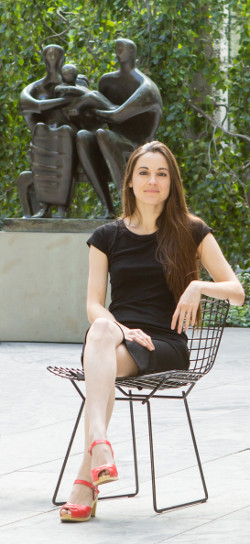 Lauren Rosati is a Ph.D. Candidate in the Department of Art History at City University of New York, Graduate Center
Lauren Rosati is a Ph.D. Candidate in the Department of Art History at City University of New York, Graduate Center
In the early twentieth century, avant-garde artists and musicians in Europe and the United States evinced a Machine Age enthusiasm for technological advancements and the fast pace of industrial development. Countless artworks captured depictions of new technologies and their attendant themes of speed and movement and performances glorified the mechanical noises of modern machines. New sounds in particular (e.g., the clamor of modern warfare, the static of radio transmissions) became a central interest, mimicked verbally on stage during theatrical events or represented onomatopoetically in written form. Yet this common understanding of the relation between art and technology in this period as one of passive enthusiasm does not account for the artist-engineers who turned their attention to actual technological devices as new media for creative experimentation by the early 1930s. Expanding our current knowledge of this era, my dissertation analyzes projects by four such figures who worked directly with emerging sound technologies, transforming a fascination with the machines of modernity into a functional practice and extending the avant-garde project to explore new modes of perception into a sonic register.
I examine a cross-section of experiments in the United States, Russia, Germany and France: key centers of avant-garde activity in the interwar period. In 1933, orchestra conductor Leopold Stokowski (1882–1977) collaborated with Harvey Fletcher, a prominent physicist at Bell Telephone Laboratories, and other engineers on the long-distance transmission of a symphony concert by telephone. In 1930, Russian engineer Evgeny Sholpo (1891–1951), working with colleagues at the Central Laboratory of Wire Communication in Leningrad, invented a device for the production of synthetic sound, made from cut paper, to accompany motion pictures. That same year, building on the recent invention of optical sound-on-film systems, German animator Rudolf Pfenninger (1899–1976) devised a method of artificial sound synthesis based on translating hand-painted sound waves into light and then audible sound. In the early-1930s, the Surrealist radio plays of French artist Paul Deharme (1898–1934) used sound to explore the unconscious mind, drawing directly from methods developed concurrently in the field of Freudian psychoanalysis. I situate these projects within the broader socio-political climate of the interwar years and discuss the impact of scientific and technological advancements on these creative experiments, including innovations in architectural acoustics, the expansion of the radio network, scientific explorations into sound imaging, and the development of the “talking cure.” My history of artist-engineers and the milieu within which they worked reveals a previously unexplored relationship between sound, the avant-garde, and technological innovation.
With the generous support of the Consortium, I completed research at the University of Pennsylvania’s Kislak Center for Special Collections, Rare Books & Manuscripts, where I viewed the personal papers of longtime Philadelphia Orchestra conductor Leopold Stokowski and several other special collections featuring unpublished materials on the maestro, which altogether comprise a trove of information on his activities and interests. In particular, Stokowski’s correspondence as well as notes and clippings in his files on acoustics research, electronic instruments, and sound recording provide an exciting chronicle of a little-known 1933 collaboration with Bell Telephone Laboratories, that is the focus of my work, to transmit an orchestra performance telephonically from an empty Philadelphia theater to audiences listening from a concert hall in Washington D.C. The hard-to-find recording Early Hi-Fi: Wide Range and Stereo Recordings made by Bell Laboratories in the Early 1930s, which documents the results of Stokowski and Bell Labs’ combined research into hi-fidelity stereo sound recording and which is held at Kislak, provides the only sonic record of the collaboration. The archives, recording, and a rare pamphlet produced to accompany a demonstration of the technology offered me new insights into the joint project, in terms of how research conducted by Bell on the limits of human hearing, amplification, and transmission technology was reapplied by Stokowski towards creative ends.
The extensive holdings at the Hagley Museum and Library further enriched my chapter on Stokowski and Bell Labs. Its astonishingly robust collection on the history of American sound recording and broadcasting, particularly at the Radio Corporation of America (RCA), provided me with critical context on the American telecommunications industry in the 1930s, on the development of electroacoustic technologies used to support the transmission of sound, and on RCA’s high-fidelity sound system, which was developed contemporaneously with the one created by Bell Labs. Records from the Century of Progress International Exposition also revealed photographs, previously unknown to me, of the Bell Labs booth at the fair, where it demonstrated technologies developed with Stokowski.
As part of my Consortium research, I also visited Yale University’s Beinecke Rare Book & Manuscript Library to examine the correspondence and manuscript drafts in the Filippo Tommaso Marinetti papers. Marinetti’s “telegraphic writing” in Zang Tumb Tuuum (1912) is the subject of my dissertation’s preface, which situates the work as a critical precursor to the physical engagement with technology that I discuss in the 1930s. An examination of the original manuscript and other unpublished writings provided me with important insights into the way Marinetti deployed typography and grammatical juxtapositions—inspired by the telegraph—to create works of visual and aural interest. In particular, I discovered a visual resemblance between 1910s Italian telegram forms and Futurist stationary designed by Marinetti.
I am extremely grateful to the Consortium’s support of my research and to the librarians and archivists who assisted me in locating materials. The extraordinary libraries at the Consortium’s member institutions offer unparalleled holdings on the history and scientific development of sound technologies as well as numerous archives of significant cultural figures. These holdings collectively offer a unique opportunity to draw out connections between technological advancements and artistic experiments in the twentieth century.
Profile:
Lauren Rosati